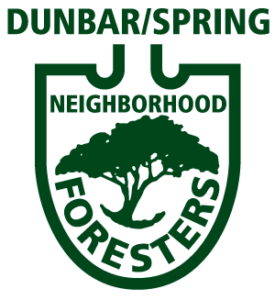Compiled by Brad Lancaster
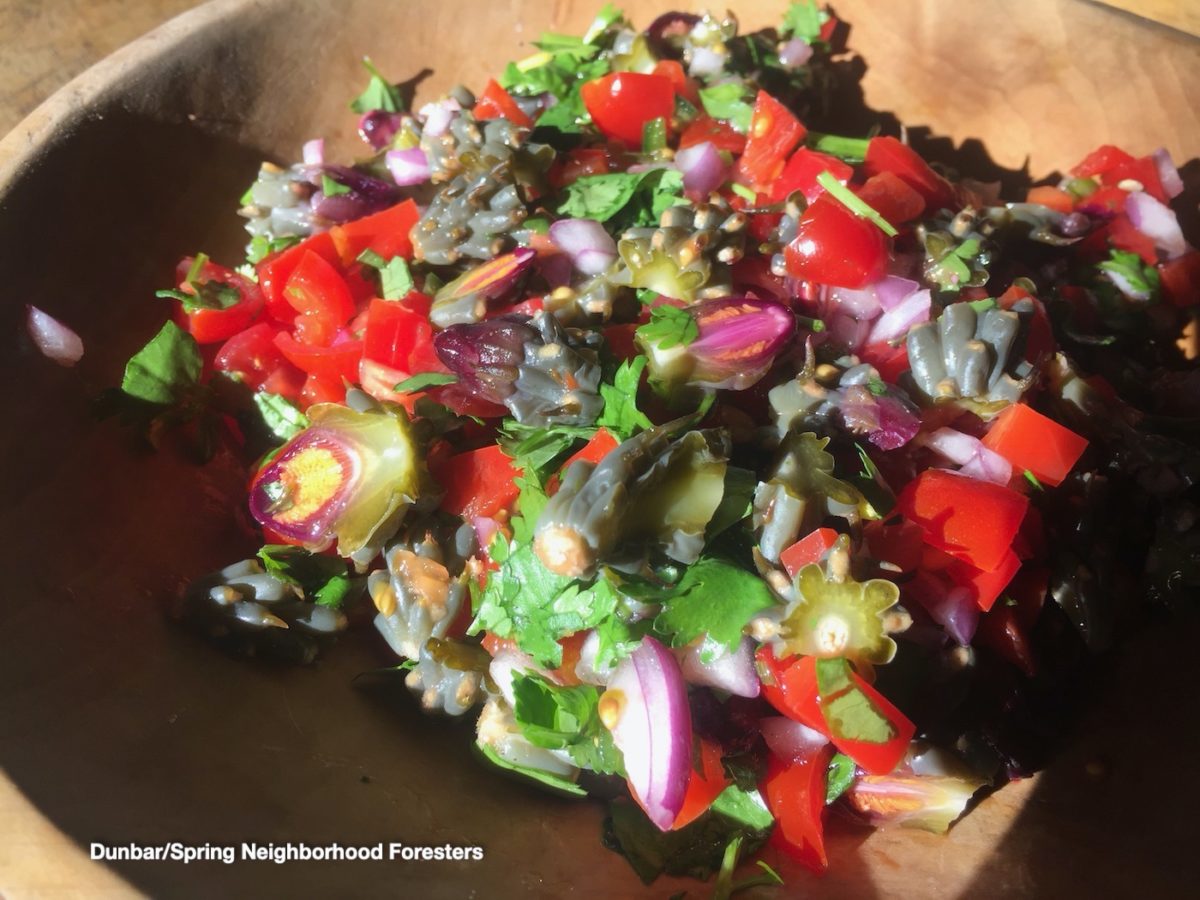
Recipe in “From Itoi’s Garden: Tohono O’odham Food Traditions” by Mary Paganelli Votto, Frances Sallie Manuel and the Tohono O’odham Community Action (Organization)
Photo: Brad Lancaster
Opuntia spp.
Cholla
(Cactaceae – Cactus Family) subgroup Cylindropuntia:
Spanish name: cholla
O’odham name: ciolim
Yeome name: choa
Characteristics
Plant has thorny cylindrical stems or “joints”. Can grow to the size of a medium to large bush or small tree. Evergreen.
Scroll down for different varieties of cholla.

Photo: Brad Lancaster
Wildlife it supports
Bees love the flowers, and native non-stinging solitary bees will sleep inside the flowers when they close up at night then reemerge in the morning when all open up. Hummingbirds to flowers. Cactus wren, curve-billed thrashers, white-winged dove, and other birds go for the fruit and nesting possiblities. Cholla makes for safe bird habitat in the urban environment as cats don’t climb cholla. Mule deer eat the fruit (Felger and Moser, 1985). Desert bighorn sheep and javelina eat the fruit.

Photo: Brad Lancaster
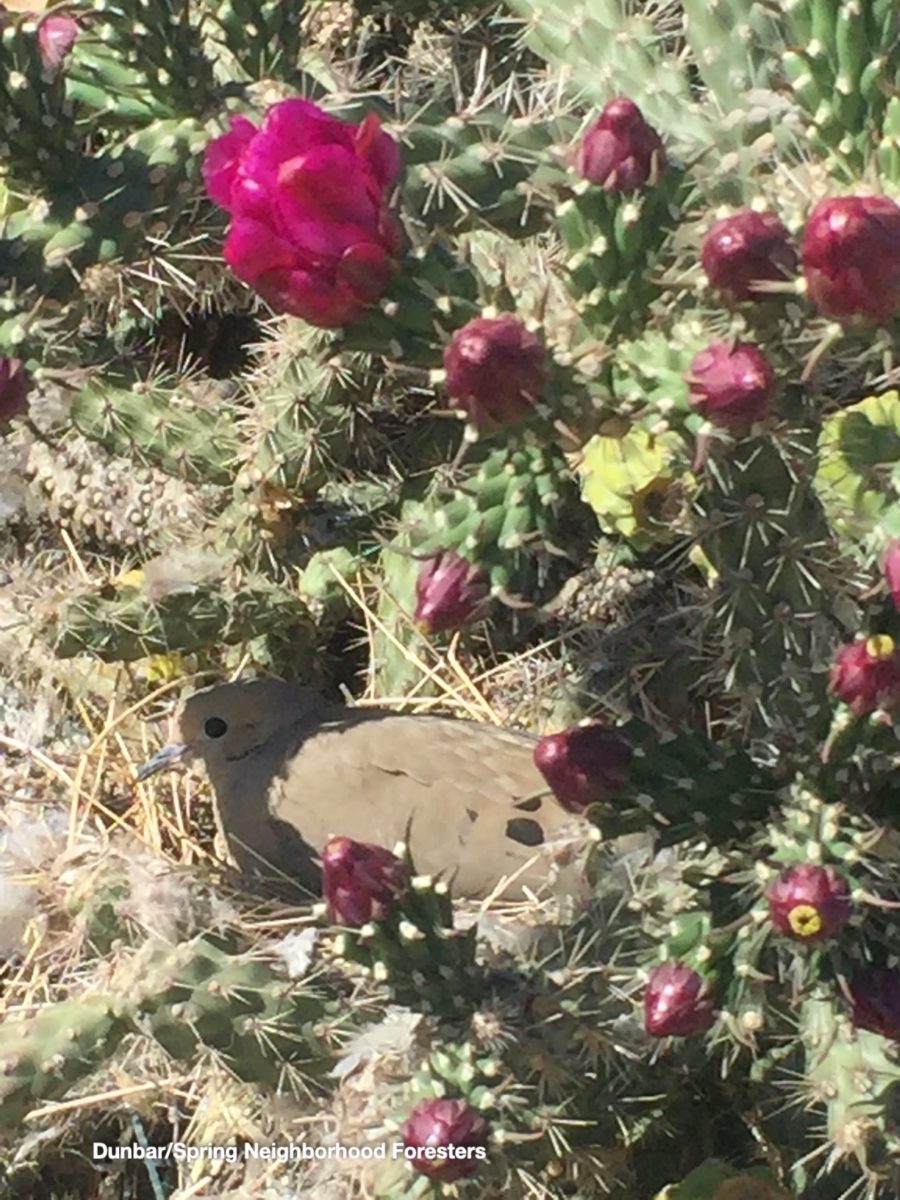
Photo: Brad Lancaster
Edible
Flower buds are picked just before opening, de-thorned, cooked, and eaten or dried for later use (Niethammer, 1987), (FOG); a four ounce serving of cholla buds gives you as much calcium as a glass of milk (Niethammer, 1987); the roasted buds were mixed with Atriplex wrightii and Chenopodium album for a vegetable stew (Ebeling, 1986); fresh cholla fruits can also be peeled and eaten, made into marmalade, or candied (Niethammer, 1987); the fruits and prickly joints of the cactus were also cooked and eaten like the flower buds (Niethammer, 1974); seeds can be used in a wild flour mixture (Nyerges, 1998); Good food for diabetics (Dahl, 1995), (Nabhan, 1991). Harvest typically begins in April (and later at higher, cooler elevations).

Photo: Brad Lancaster
Do not harvest more than a third of the flower buds on any plant, to leave enough for other harvesters, wildlife, and the cholla plant—so it can reproduce.
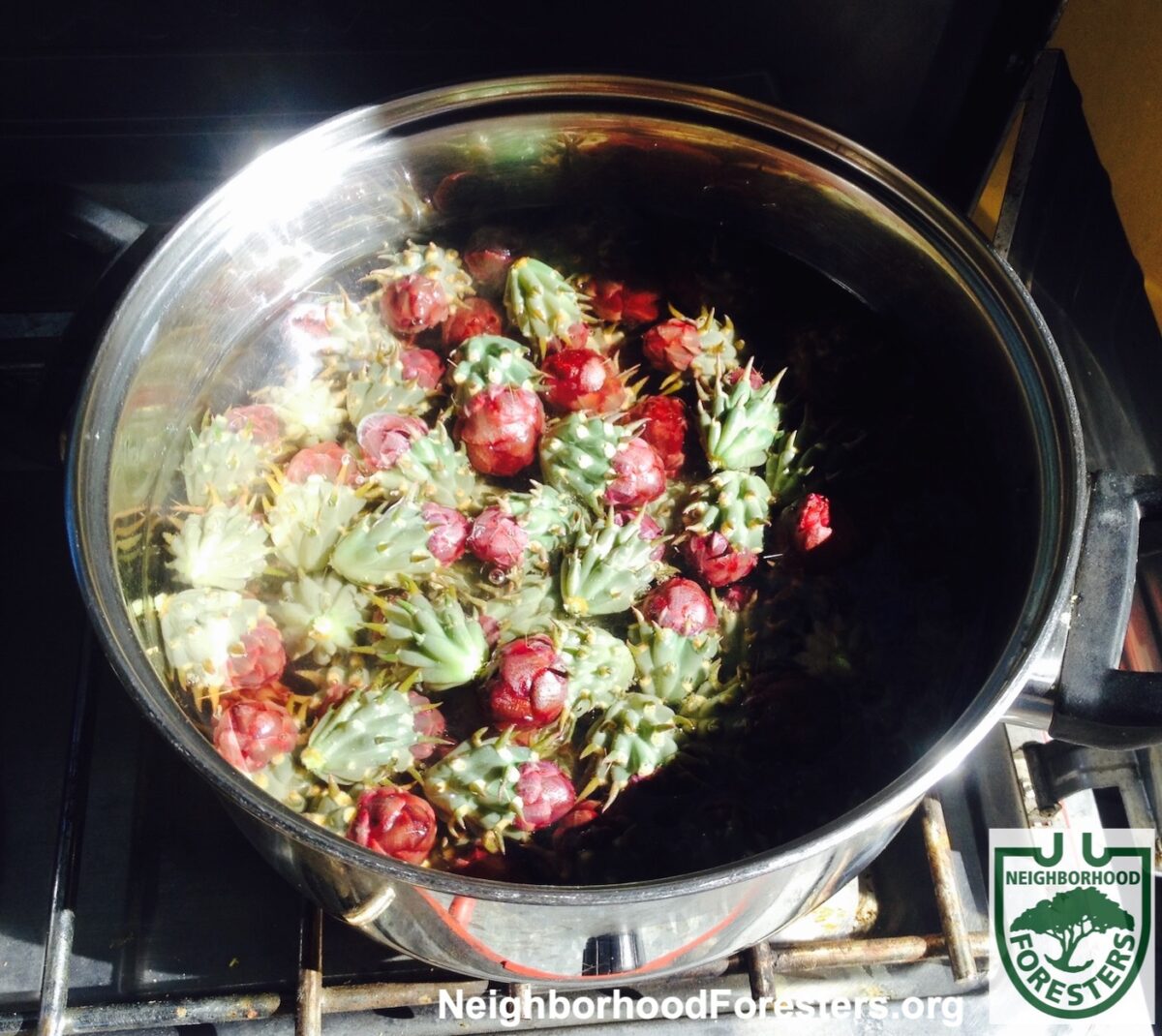
Photo: Brad Lancaster
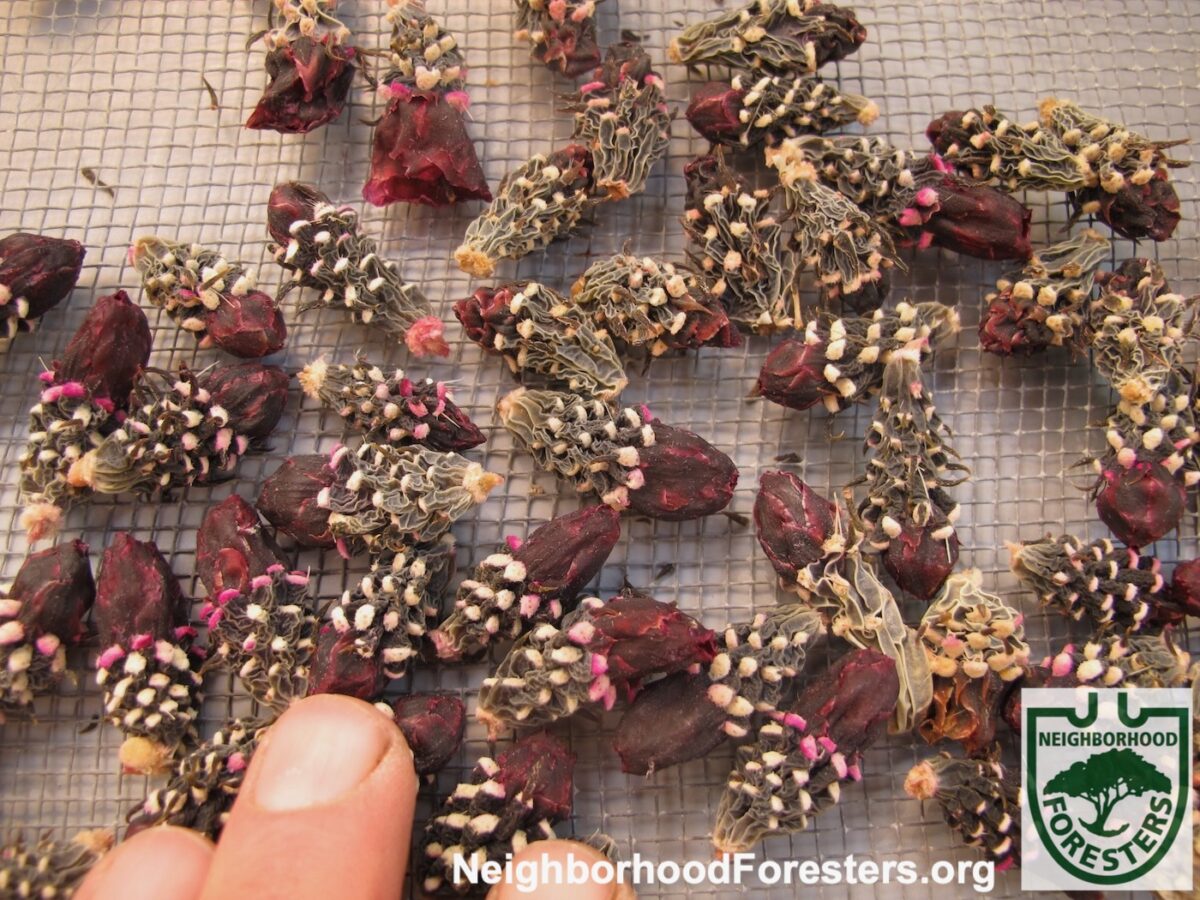
Livestock it supports
My friend Anastasia Rabin’s goats loved to eat dry, dead canes of cholla cactus. Ate them up like potato chips. Goats and cattle eat cholla (though they tend to go for more tender feed first).
Other uses
Medicinal (Niethammer, 1974).
Plant as a security screen or cat-free bird habitat; some of the gums obtained from cholla plants have been used as a cloth-stiffener in Mexican textile mills (Niethammer, 1974).
Water needs
LW (1)
LW = low water 10 – 20 inches of water per year
“1” = no supplemental irrigation needed once established
Rain garden planting zone
TERRACE, top
Propagation and urban forestry
It’s easy!
Since staghorn cholla (Opuntia versicolor) has a about a dozen different flower colors, each plant reliably blooming the same color each year (scroll to end of this blog essay for photos of different flower colors), friends and other Neighborhood Foresters and I harvest canes (when the plants are blooming) and plant the cuttings. We select cuttings for bloom color, edible flower bud size, the vigor and health of the mother plant, and buds with fewer thorns (for easier processing).
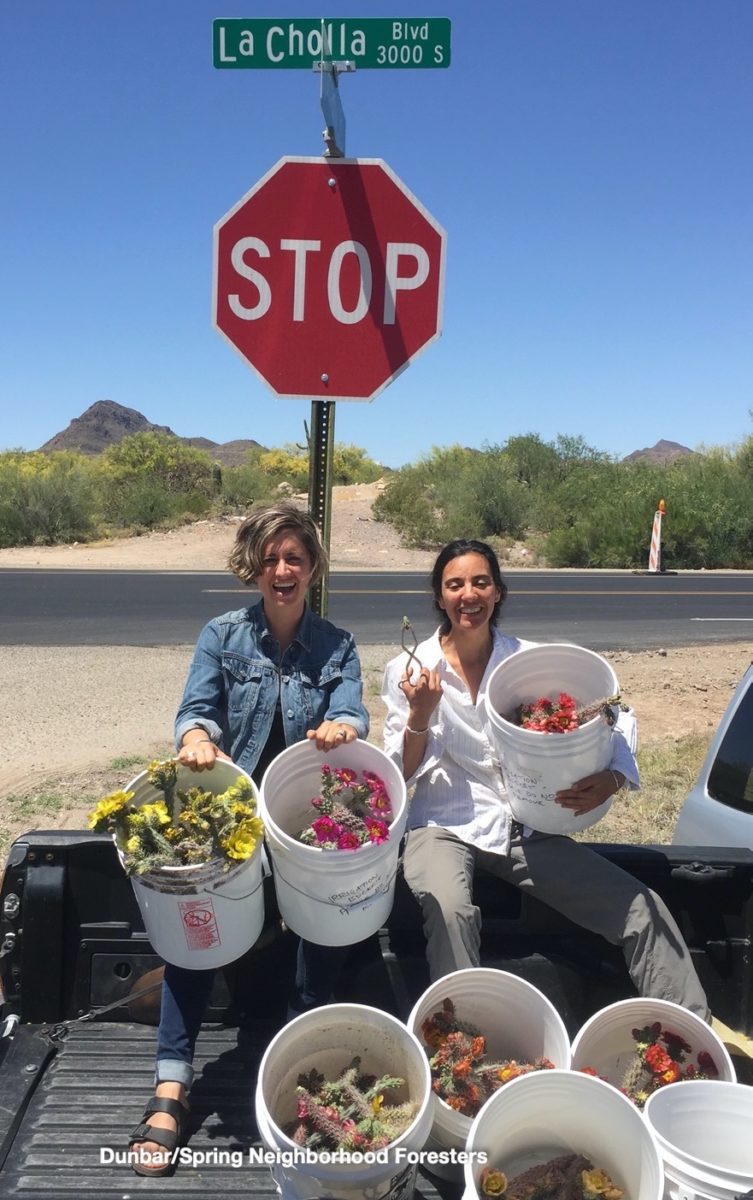
Photo: Brad Lancaster
When we plant up the cuttings in pots, we mark that cutting’s characteristics (such as bloom color) on its planting pot with a wax pencil (along with an “X” on the side of the pot facing south, so if the pot is ever moved, we keep the “X” facing south. And when the rooted cutting is transplanted into the ground, we make sure the south-facing side of the cholla plant is still south-facing—avoiding sunburn to the plant that would occur if the orientation were changed).
Plan & plant for the future now
When planting in the ground, plan for the plant’s eventual size after it grows and matures. As the staghorn cholla can grow to a height and diameter of 10 feet, be sure to plant it at least 5-feet from a pathway, so you won’t have to prune it (as it grows) to keep the path clear.
The cholla will also do better if you plant it where it will get additional rainwater, such as beside a raised pathway, driveway, or road that drains its runoff water to the planting area.
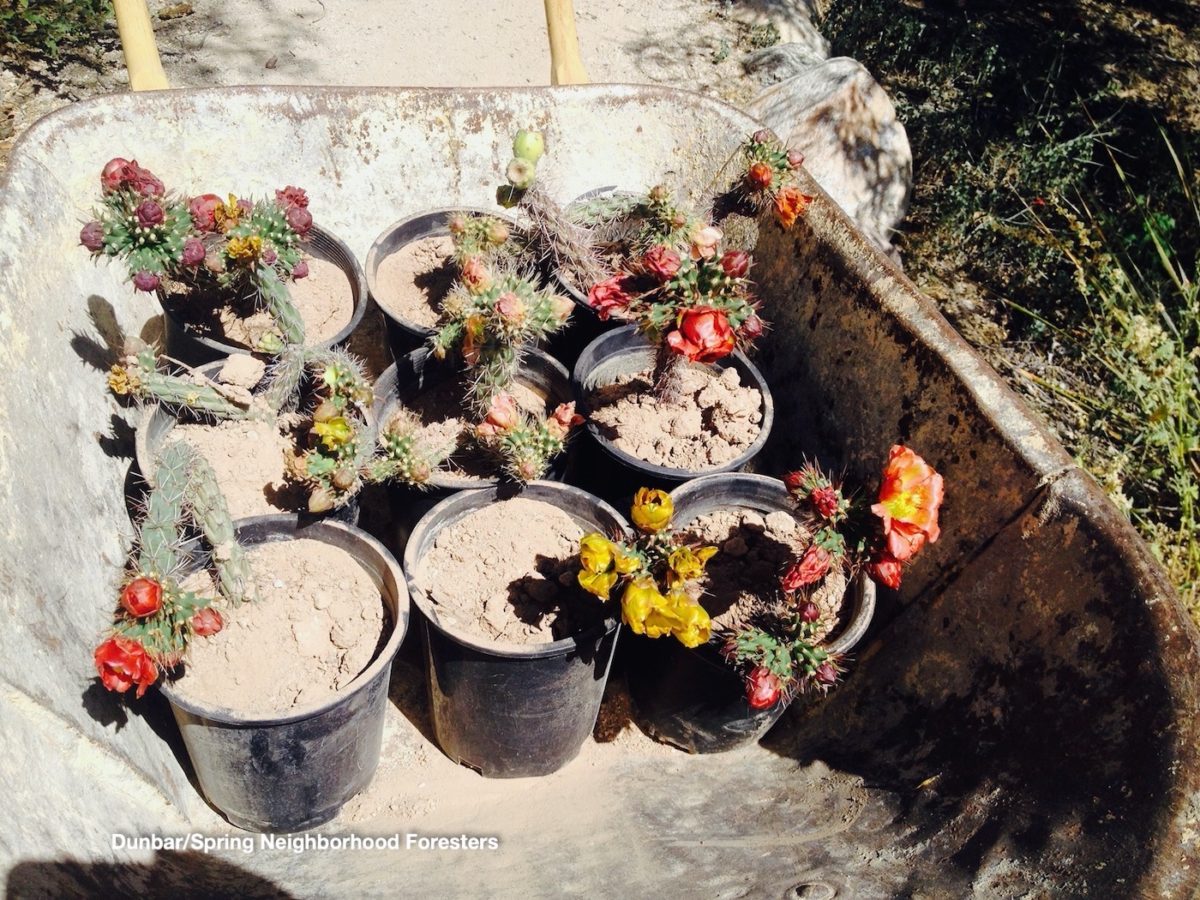
Photo: Brad Lancaster
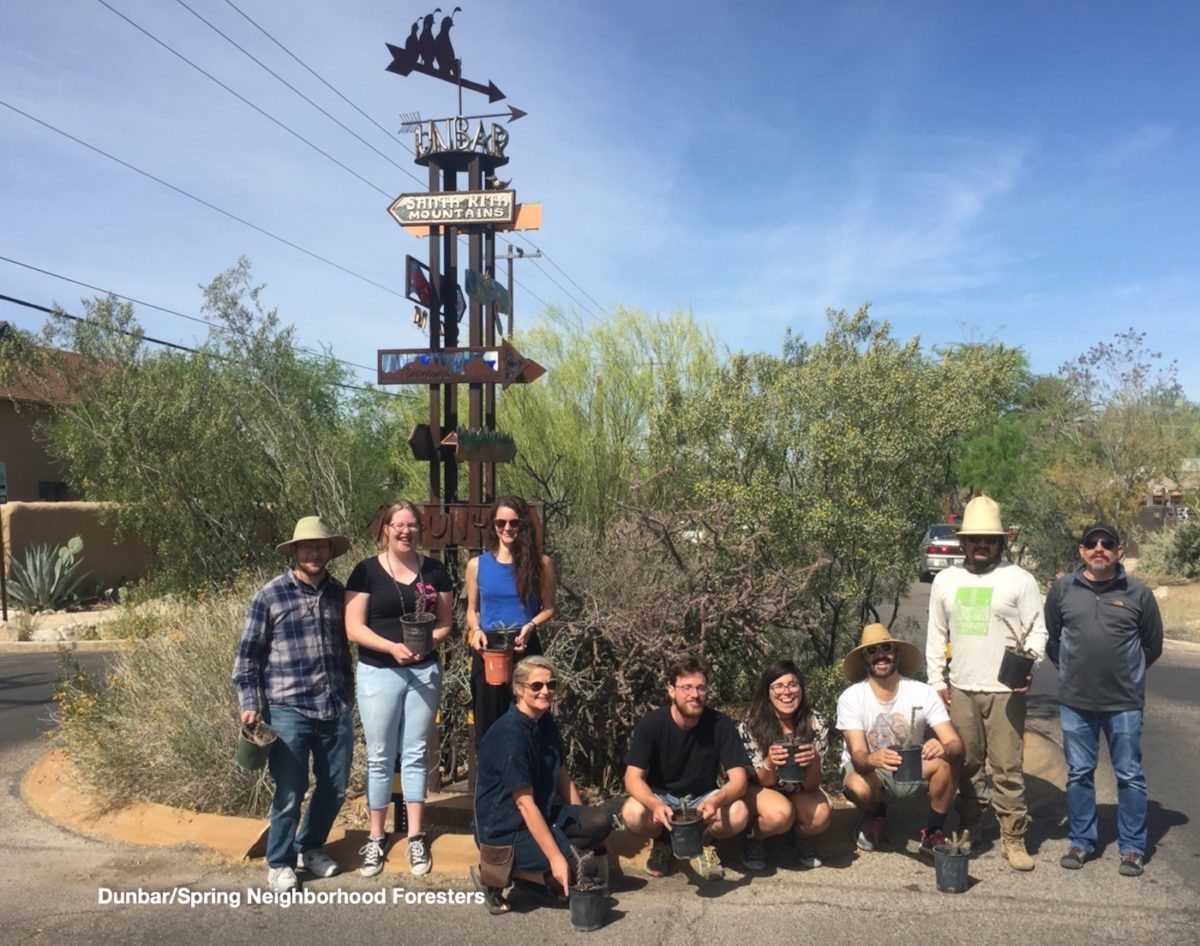
Photo: Brad Lancaster
Before removing the rooted cutting from the pot, stick a leaf, bit of ribbon, or piece of litter on a thorn on the south side of the cutting; so once out of the pot you can still identify, and orient, its south-facing side to the south. Once in the ground, remove the leaf, ribbon, or piece of litter.
Note that when I harvest the canes, I don’t mark their south-facing side, but when I pot them up I do. The south-facing side tends to be more purple or “tanned”, while the side getting less direct sun exposure is a lighter color. The flower buds also tend to grow up toward the light and the sun, so it is fairly easy to then mark an “X” on the side of the pot to which the “tanned” skin of the cholla cane is facing.
Once the cuttings are well rooted, we then distribute the plants to those in the neighborhood that want to plant and care for them. Doing so, neighbors can choose their cholla plant by flower color, then plant it in their section of the neighborhood forest.
Different species
There are a number of different species of cholla cactus native to the Sonoran desert. Here are a few…
Opuntia versicolor
Staghorn cholla
The species name versicolor, refers to the variability of the color of the flowers. Fruit is usually spineless. 2,000 – 3,000′. Tree-like in form with an open crown. Grows 3 – 15′ tall.
Edible – fruit eaten fresh once thorns were removed (Felger and Moser, 1985); de-thorned flower buds eaten by Tohono O’ Odham; flower buds harvested in the spring are roasted and eaten as a minor food by the Gila Pima (Rea, 1997). I eat the flower buds just before they bloom when hiking in the desert in spring. I dethorn them first by brushing them with a brush of plant twigs or rubbing them on a rock or gravel with a stick and then picking off the rest by hand, then I pop them in my mouth and chow down. I find their slimy texture very nice on hot, dry hikes as they reduce my thirst and fill my belly.
Due to the plant having about a dozen different flower colors, we harvest canes in April, then root them in pots, carefully marking each pot with the color of the flower of the cane planted. Folks can then select and plant the cholla of their desired bloom color and transplant them into the ground.
See some of the different bloom colors below…
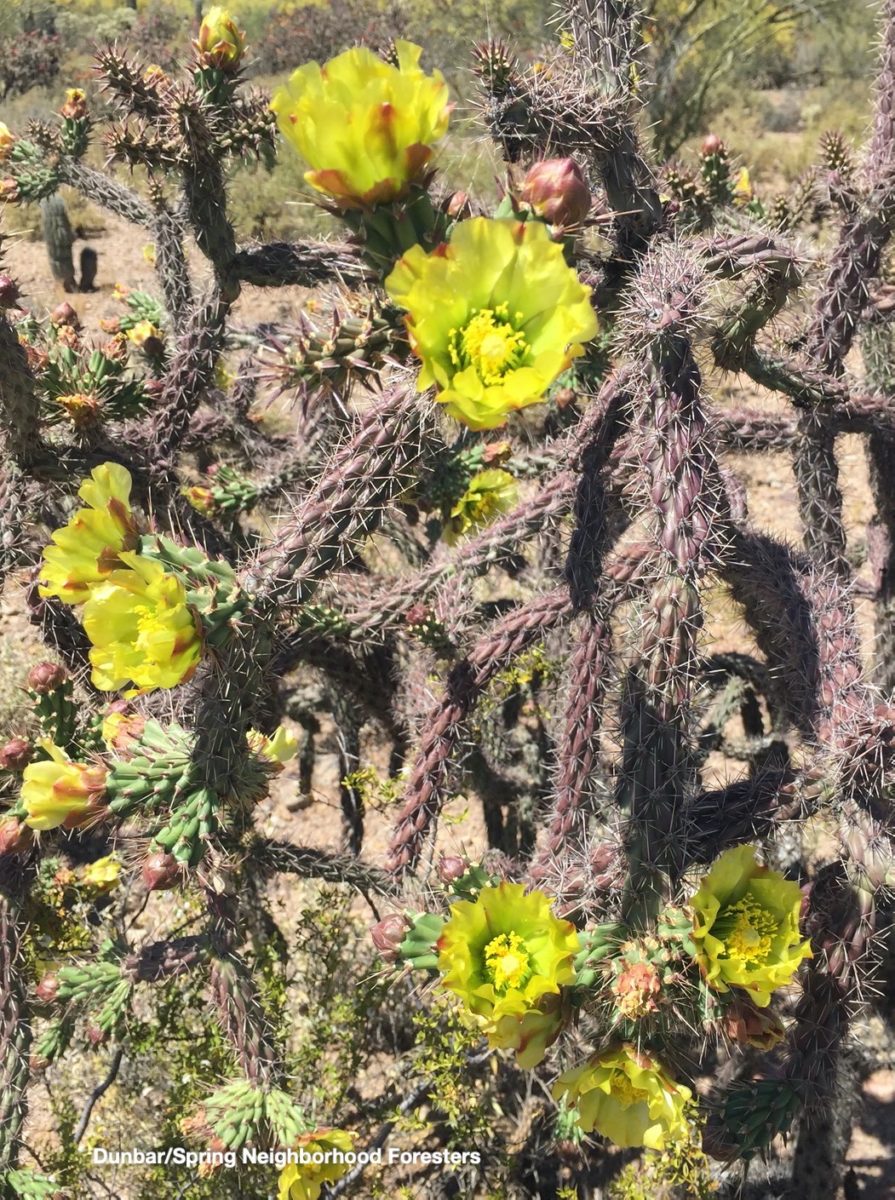
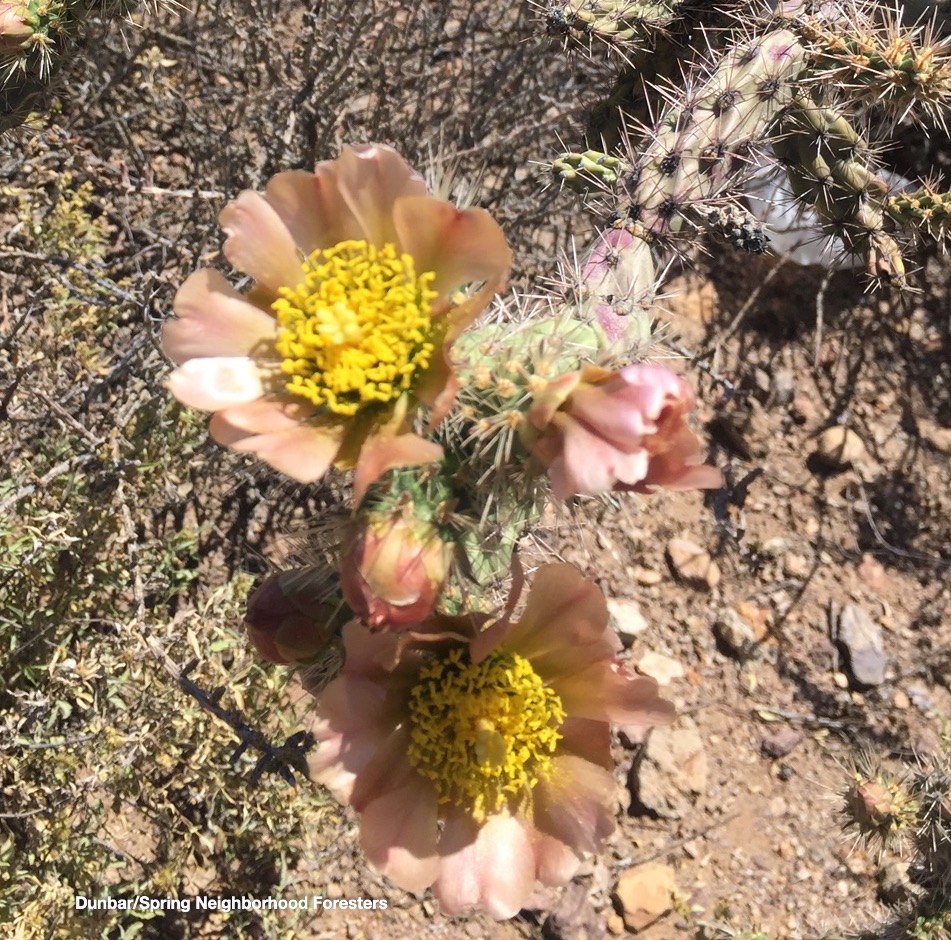
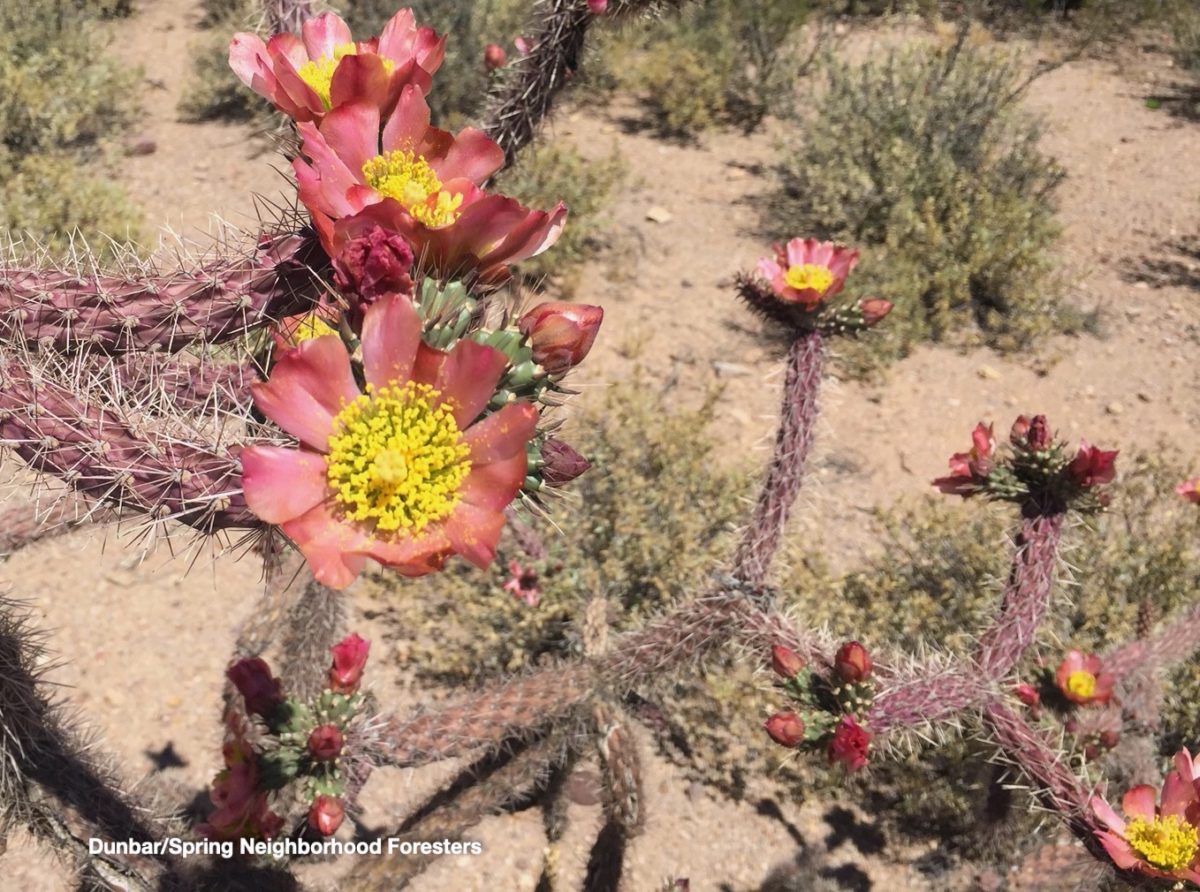
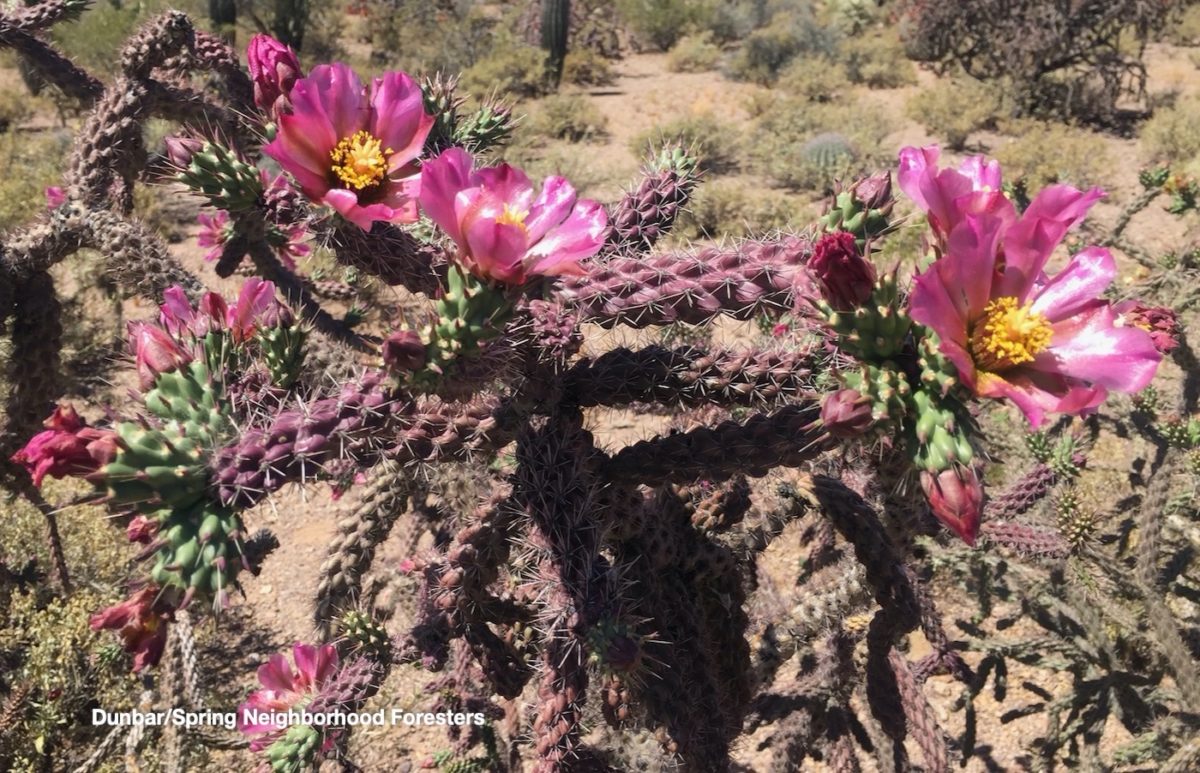
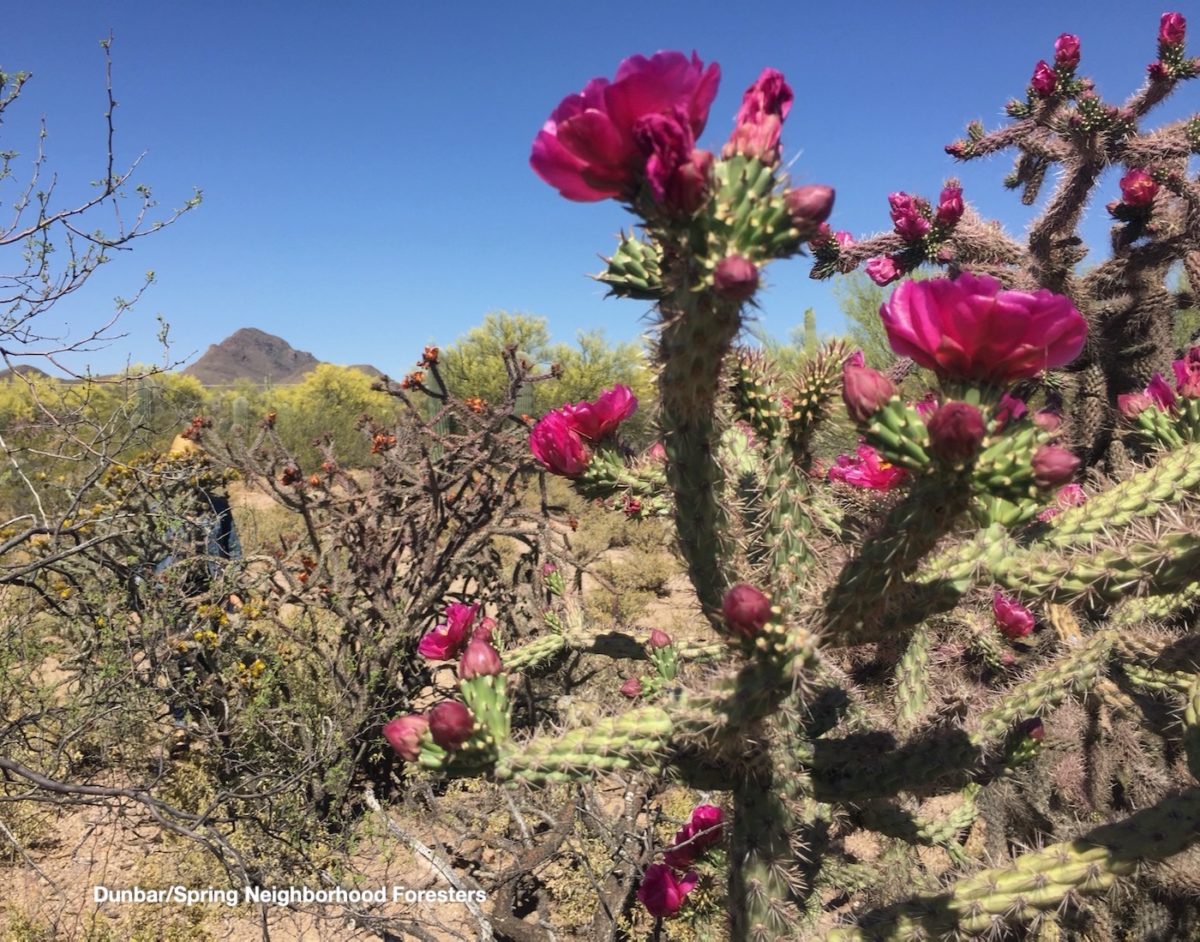
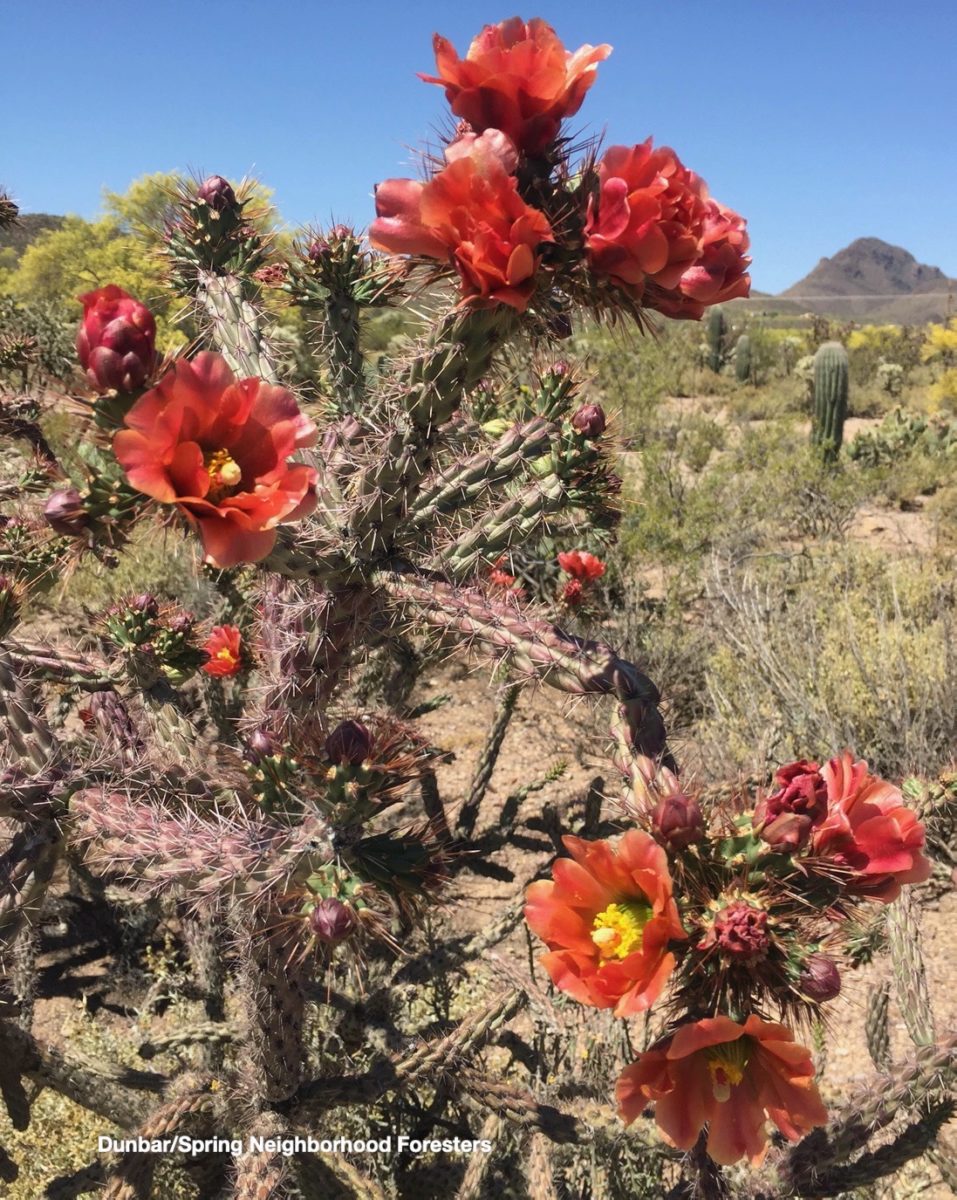

Opuntia acanthocarpa (O. thornberi)
Buckthorn cholla
Blooms (yellow – purple) April – May. Spiny fruit. 500 – 3,500′. Grows from 3 – 9′ tall in a shrubby to somewhat tree-like form. Branches are long and straggly. Found in sandy soils along washes and on slopes. Greenish color of plant can change to a more red or purple blush when stressed by drought or cold. Edible – harvested in the spring, flower buds are steamed and eaten (often with pinole or saltbush greens) (Kearney and Peebles, 1951), (Rea, 1997). Medicinal (Bean and Saubel, 1972).
Opuntia arbunscula
Pencil cholla
Blooms (yellow to orange) May – June. Greenish fruit. 1,000 – 4,000′. Deep green branches are about the diameter of your pinky finger. Can grow up to 9′ tall, but usually much less. Found in sandy and gravelly soils of valleys, washes, and plains. Edible – young joints and flower buds boiled and eaten (Rea, 1997 ), (Kearney and Peebles, 1951); fruit eaten fresh after removing spines (Felger and Moser, 1985); edible flowers (Rea, 1997). Flower buds are ready for harvest later in the season than those of O. acanthocarpa, allowing for a longer overall harvest season or a second chance if you miss the first harvest. I’ve found this cholla to have the most easily dethorned buds, making cholla bud processing much quicker than more heavily thorned varieties.
Opuntia bigelovii
Teddy-bear cholla
Cholla guerra
Blooms (greenish – yellowish streaked with lavendar) February – May. The fruit is infertile and has no seed. 3,000′ and below. Dense covering of spines makes the cactus look cuddly from a distance. Grows from 4 – 12′ tall. Found on south or west-facing rocky slopes and on gravelly flats. Wildlife – ants visit the extrafloral nectaries on young joints and flower buds, and may reduce insect predation (Turner, et al 1995). Edible – Seri Indians burnt off the thorns of young stems or joints, cooked the stems, and it was ready to eat (Felger and Moser, 1985); fruits were gathered, the small glochids were brushed off (after boiling two minutes spines and rinds are easily peeled off), pulp was cooked or steamed with hot stones for 12 or more hours, and then eaten or dried for storage (Ebeling, 1986). Medicinal (Kay, 1996), (Felger and Moser, 1985).
Opuntia fulgida
chain-fruit cholla
Blooms (white, pink, or magenta) May – August. Fruits are green (even when ripe), and can be harvested throughout the year. Up to 4,000′. Chain-like clusters of fruit hang from the tree, while the densely spined, pale green joints like to hang from whatever brushes up against them. Can grow up to 15′ tall (although normally shorter). Usually found on gravelly flats, but some grow on rocky slopes. Wildlife – medium-sized native bees and Xylocopa carpenter bees pollinate flowers; desert bighorn sheep and javalina reportedly eat the fruit (Felger and Moser, 1985 ). Edible – tart yet sweet fruit is peeled and eaten raw (seeds too), cooked and eaten plain or with honey (Felger and Moser, 1985 ), jellied, or made into a beverage (Facciola, 1998), (Turner, et al 1995). A black gum found oozing from the cholla’s stems can be eaten raw once cleaned of thorns and such (Felger and Moser, 1985 ); the gum can also be boiled then eaten or toasted, ground, mixed with water and drunk (Felger and Moser, 1985 ). The gum was sometimes mixed with honey or roasted agave juice (Felger and Moser, 1985); thorny stems were eaten after thorns were burnt off and the flesh was then fried (personal communication with Cipriano 7/1/2000). Medicinal (Felger and Moser, 1985). Other uses – cattle love the fruit and sometimes eat the spiny joints (if spines are scrorched they have an easier time) (Kearney and Peebles, 1951); skeleton used for small woodworks (Kearney and Peebles, 1951). Guild associates – mammillaria spp.
Opuntia kleiniae
Klein’s cholla
Blooms pinkish to violet. Smooth fruits are orange to red. Branches are thicker than those of pencil cholla. 2,000 – 6,000′. Grows 3 – 6′ tall in a sprawling, open-crowned form. Branches are about as thick as an adult’s pinky finger.. Guild associates – pencil cholla.
Opuntia leptocaulis
Christmas cholla
Oˊodham Name: Aj Wipinoi
Blooms (greenish, yellow, or bronze) May-June. Fruit is bright red when ripe (I have seen some plants south of Sentinel Peak and north of Tumamoc Hill in Tucson with yellow fruit). 1,000 – 5,000′. Shrubby form with 1/4 inch thick stems. Grows to 4′ tall. Found in washes, valleys, on plains, mesas, and gentle slopes. Thrives under the protection of a nurse plant. Wildlife – flowers attract pollinators such as hummingbirds, Apis mellifera, Diadasia rinconis; various birds love to eat the fruits. Edible – fruit removed of spines can be eaten fresh (Felger and Moser, 1985 ), (Felger, et al 1992), eaten as a snack food among the Gila Pima (Rea, 1997 ). Medicinal (Kay, 1996 ), (Rea, 1997 ). Guild associates – velvet mesquite, Larrea tridentata, desert lavender, wolfberry, greythorn, condalia.
Opuntia ramosissima
Diamond cholla, pencil cactus
Blooms yellow to brownish-pink. Below 4,000′ in the western part of Pima County. Grows 2 – 5′ tall. Branches are pencil width and grayish in color with a grooved surface. Found in dry washes, on slopes, and mesas. Edible – dry, burlike fruits gathered by the Cahuilla between April and May and eaten fresh (minus glochids) or dried for later use, while the stalk (with thorns removed) was boiled into a soup or preserved for future use by drying (Bean and Saubel, 1972).
Opuntia spinosior
Cane cholla
Blooms (red-violet, yellow, orange, or white) May – June. Fruit turns yellow by winter. 1,000 – 6,000′. Grows to 8′ tall. Numerous, spreading branches and grey spines. Found from desert grasslands to desert mountains. Cold hardy. Edible – fruits eaten raw or cooked (Epple, 1995). I’ve found that after the Opuntia arbuscula‘ this variety of cholla has some of the most easily dethorned cholla buds. The Cane cholla also usually have nice fat buds. Once dethorned they are ready for cooking and then eating. Other uses – fruits eaten by cattle.
Local plant nurseries that sell native wolfberry plants
The Dunbar Spring Neighborhood Foresters has staghorn cholla plants for sale (with their flower color identified) for planting within the neighborhood of one of our directly neighboring neighborhoods. Email us at NeighborhoodForesters@gmail.com.
